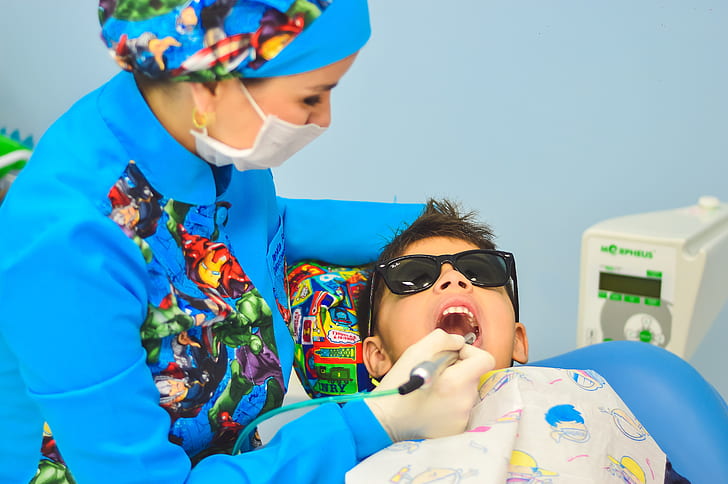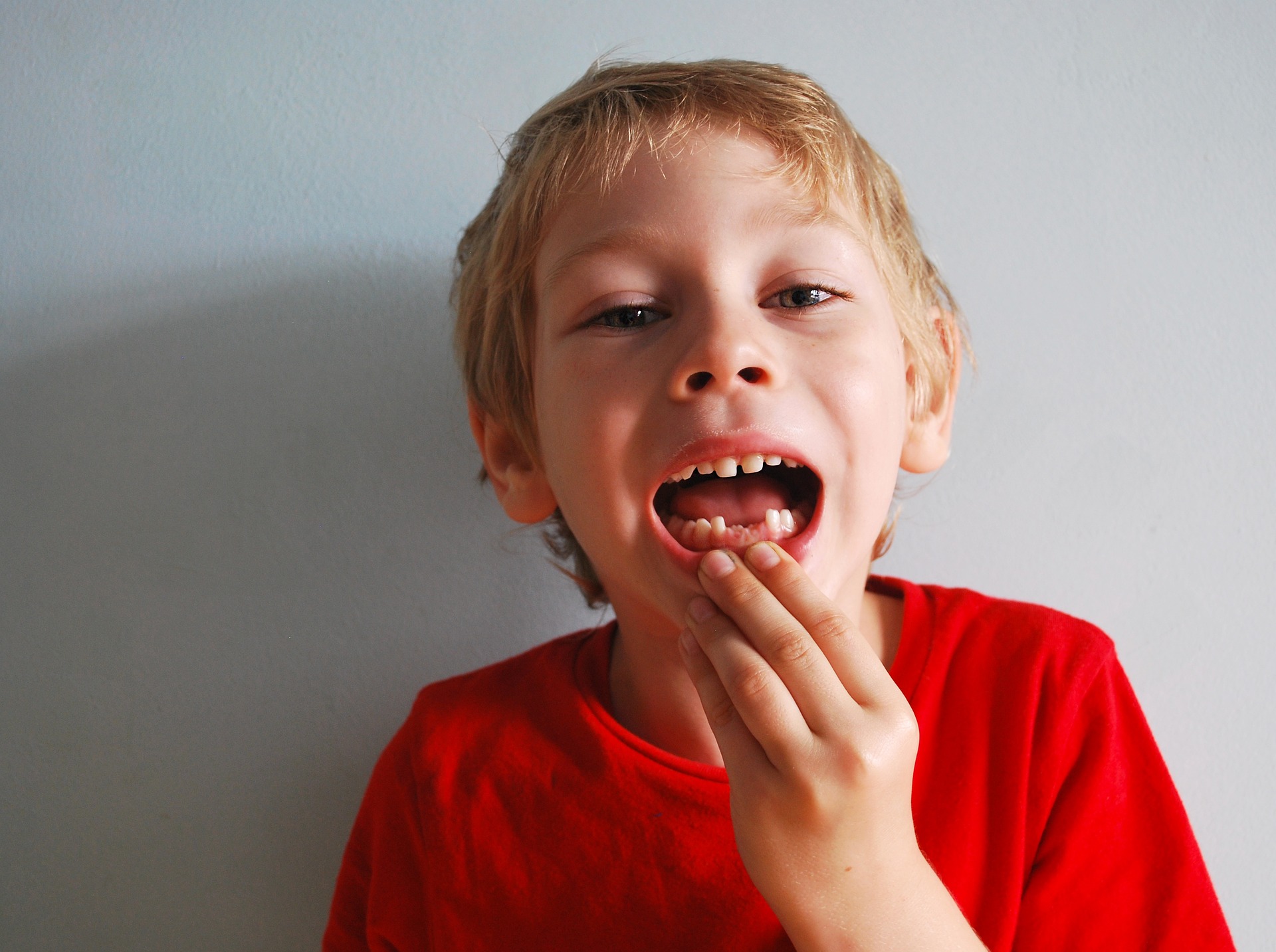It’s easy to think that a cavity on a kid’s baby tooth is no big deal. After all, baby teeth (also called primary teeth) are only temporary. So how important can they be? Actually, the condition of a child’s teeth can affect the adult teeth that will eventually replace them.
It’s beneficial for parents to be concerned with their kid’s oral hygiene, including attention to cavity prevention, as soon as their first tooth starts to show. The implications go beyond just a nice smile. Oral health care problems like cavities can impact overall health too.
There are plenty of adults who resist seeing a dentist. They are concerned about the cost and possible pain. They may not want their child to experience a dental procedure for the same reasons. But if they suspect a cavity on a kid’s baby teeth, it’s best to face the worry and get it checked as soon as possible.
Facts About Baby Teeth
Primary teeth start to come in when a baby is between 4 and 12 months old, but they actually begin to develop while the child is still in the womb. They are just like adult teeth in strength and what they’re made of, only smaller. A child typically has a full set of baby teeth by age 2.
Baby teeth start to fall out around age 5, with the final one at about 12. They are pushed out by the growth of the child’s adult teeth. The old roots are reabsorbed by the new, permanent roots.
Although baby teeth are temporary, they are still in the child’s mouth for about 4 to 10 years. That is quite a long time, so it’s not surprising that they serve an essential purpose—and their health matters.
Healthy baby teeth play an important role in a child’s development. Without them (or if they have painful cavities) a child will have difficulty chewing and speaking. This can have a negative impact on nutrition, growth and overall development. They also act as placeholders for the position and alignment of adult teeth when they come in.
Dangers of Ignoring Cavities in Baby Teeth

A cavity occurs when bacteria sits on the teeth too long and starts to eat away at the enamel. Eventually, it can wear all the way through to the inner portion of the tooth called the pulp chamber. An infection in the pulp chamber (pulpitis) can be extremely painful. Without immediate attention, the infection can spread to neighboring teeth or even into the bloodstream. In the worst cases, it can cause bone loss in the jaw or travel to the brain or heart.
Baby teeth are just as susceptible to cavities as adult teeth. And even though they will eventually fall out, the infection can spread and cause plenty of damage before then. The harm does not only affect the baby tooth, but it can hurt the permanent tooth that eventually grows in its place. An untreated infection can get into the new root, causing early tooth decay in the new tooth.
Pulling a baby tooth with a cavity might seem like a sensible solution. Unfortunately, that rarely works to completely fix the problem. Since baby teeth hold the place for permanent teeth, pulling them before they’re ready to come out leaves a space. A lost tooth, even in an adult, can mess up tooth alignment and bite as the teeth shift around to fill in the gap.
When a child has missing primary teeth, their adult teeth may come in crooked or crowded. This might increase the need for braces or other orthodontic appliances in the future.
Does Your Child Have a Cavity?
Kids will still have some baby teeth even once they’re able to handle their own brushing and flossing. Before then, parents are the first line of defense. They should be alert to changes in the appearance of their child’s teeth during the daily brushing routine. The first sign of a cavity on a kid’s baby teeth is often a small white spot near the gum line.
A cavity can also cause some pain or sensitivity. Toddlers and young children might have a hard time explaining exactly what’s bothering them, but changes in their habits can be a clue. They may lose their appetite or even turn down favorite treats if their mouth hurts.
Diagnosing a cavity in a primary tooth can be tricky because at first, there may be none of the usual symptoms. A dentist will be able to detect signs of a cavity when parents can’t. It’s important to start routine dental checkups early. It’s recommended that kids have their first appointment around their first birthday or within six months of their first tooth showing up.
Many dentists will wait until a child is 5 or 6 years to do routine x-rays. They may do them earlier if they suspect a cavity that isn’t clearly visible.
Treatment for Cavities in Primary Teeth

The best treatment for a cavity on a kid’s baby teeth is the same as on any tooth: A dental filling. In most cases, fillings are routine, inexpensive, and cause little discomfort. They work best when the cavity is caught early, which is another good reason for regular checkups.
Waiting too long to take care of tooth decay can result in a kid with a mouthful of cavities. Believe it or not, if the infection is bad, even baby teeth sometimes need a root canal procedure and a crown!
A filling or any other dental procedure can be scary for a little one. Parents may want to consider visiting a pediatric dentist. They work exclusively with kids. These dentists will be able to determine when a child is old enough to sit for the procedure and how to put them at ease. Their offices and equipment are specially designed to accommodate even the youngest patients.
Many family dentists are also used to working with young children. Who the child sees to fix their cavity is less important than getting the procedure done. The quicker the problem is fixed, the better.
How to Prevent a Cavity on a Kid’s Baby Teeth
The best possible scenario is to never get a cavity in a baby tooth in the first place. While these tips are no guarantee, they will help.
- Never let a baby drink from a bottle overnight. The sugars in juice and even milk will cling to the teeth, causing decay (sometimes called bottle rot!) Stick to water overnight or at nap time. Transitioning from a bottle to a regular cup helps prevent liquids from lingering in the mouth.
- Even before teeth erupt, get in the habit of wiping baby’s gums with a soft cloth. Gently brush teeth twice a day as soon as they pop out. Gradually introduce a tiny amount of toothpaste. Supervise them until they are able to brush effectively on their own.
- Provide a healthy diet and limit sugary treats and drinks. Be aware that the sugar content is high in some surprising foods (like ketchup!) Yummy food doesn’t need to be eliminated, but be sure to brush well afterward.
- Find out if there’s fluoride in water. Fluoride helps prevent cavities. If it’s not, the dentist may offer supplements and fluoride treatments.
- Consider dental sealants. Sealants are a coating painted on to kid’s teeth to prevent bacteria from getting in and causing cavities. They’re usually given to kids between the ages of 5 and 14. In some cases they’re recommended for baby teeth if the patient is particularly cavity-prone.
The most important tip is to see a dentist twice a year, starting when the baby is a year old. Getting into the routine early will make any future checkups and procedures easier. In the case of a cavity on a kid’s baby teeth, it can be found and fixed right away, preventing any further damage to adult teeth.
If you need to find a dentist for your child, click on our “make an appointment” button. We will match you up with a dental professional in your area and get the ball rolling for your baby’s visit.


